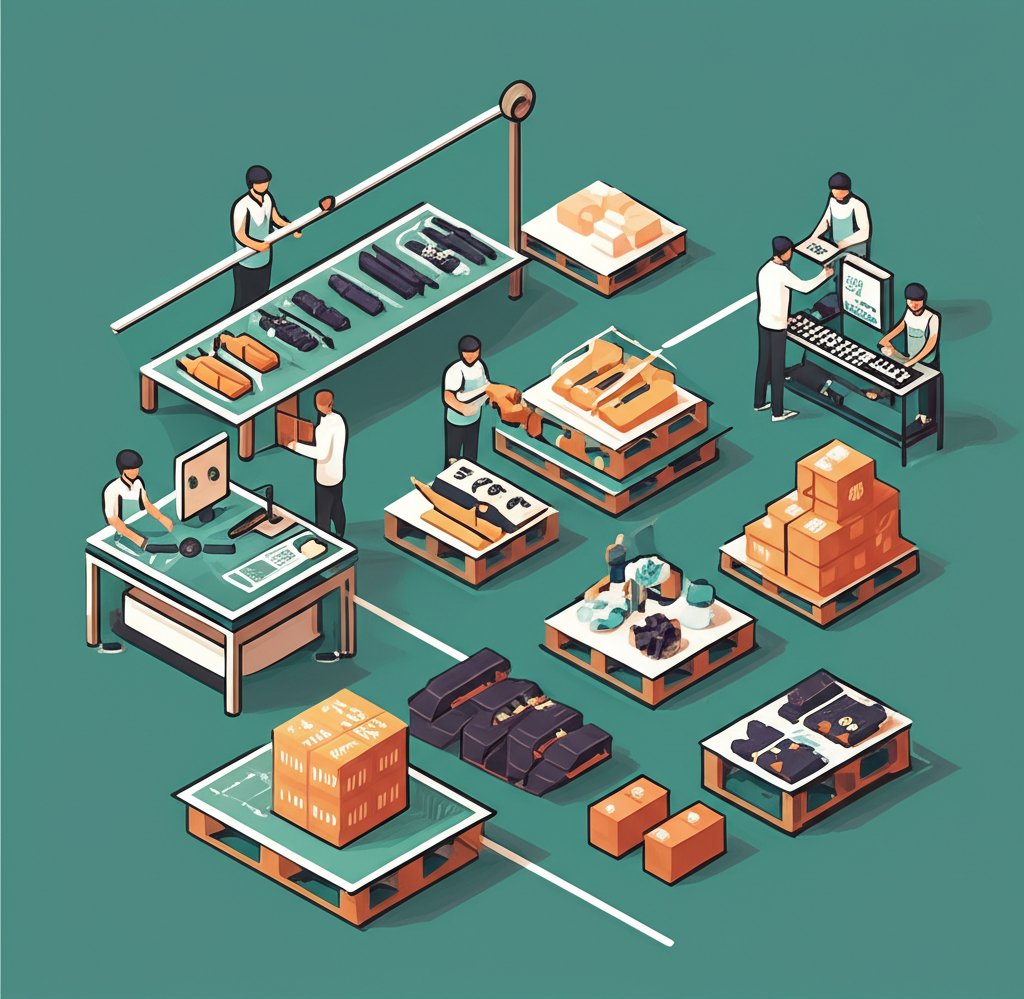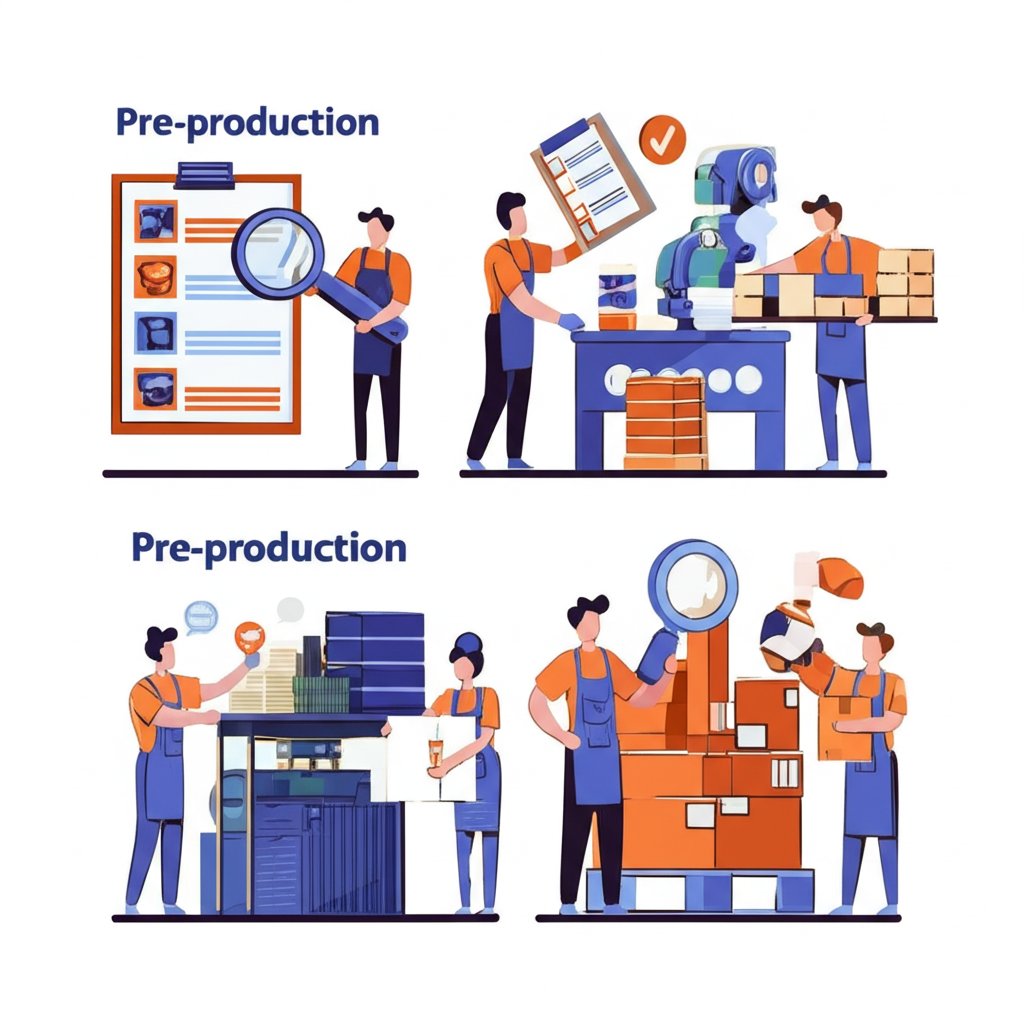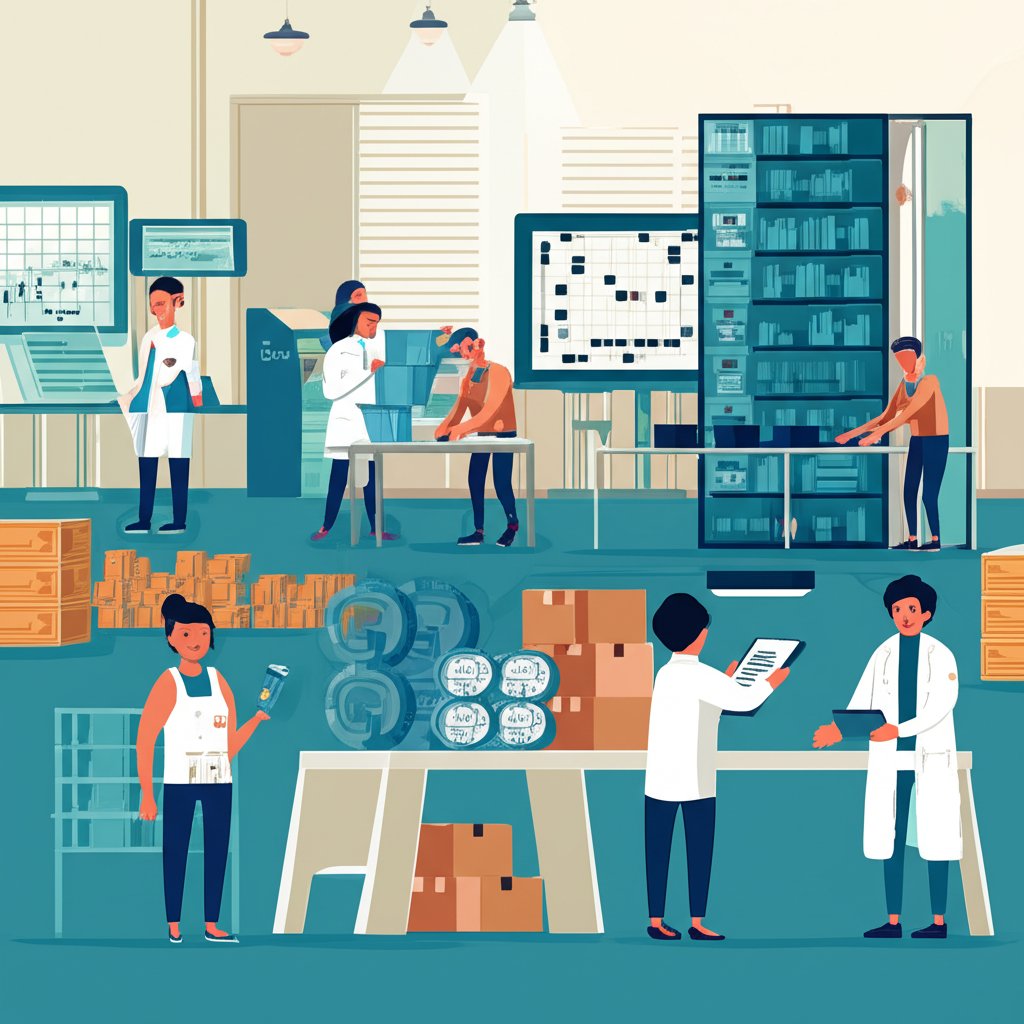
Introduction to Product Inspection in China
When sourcing goods from China, understanding the intricacies of product inspection is crucial for businesses aiming to maintain high standards of quality and reliability. Known as the ‘world’s factory,’ China’s manufacturing prowess offers immense opportunities. However, it also presents challenges that necessitate a robust quality assurance strategy.
Product inspection in China involves a series of checks and measures to ensure that goods meet specified quality standards before they reach the market. This process is vital for mitigating risks associated with manufacturing defects, non-compliance with regulations, and potential financial losses due to returns or recalls. Imagine receiving a shipment only to find it riddled with defects—sounds daunting, right? This is where a thorough understanding of product inspection comes into play.
Engaging in product inspection not only safeguards your brand’s reputation but also enhances customer satisfaction by ensuring that products are delivered as promised. The complexities of the Chinese manufacturing landscape—ranging from varying craftsmanship levels to differing regulatory standards—require businesses to be proactive. Quality assurance is not just about inspecting for defects at the end of production; it’s about integrating quality checks throughout the production lifecycle to prevent issues from arising in the first place.
Throughout this guide, you’ll learn about the essential concepts of product inspection, the importance of quality assurance during production, and how to navigate the unique challenges of conducting inspections in China. We’ll also explore the various stages of inspection, from pre-production to pre-shipment, and provide tips on selecting a reliable inspection service. By the end, you’ll have a comprehensive understanding of how to maximize the value of product inspections and ensure the consistent delivery of high-quality goods.
This comprehensive overview will equip you with the knowledge needed to make informed decisions about product inspection in China, ultimately leading to successful international trade and a stronger market presence.

Understanding the Essentials of Product Inspection
In the world of manufacturing, product inspection plays a pivotal role in ensuring that products meet predefined quality standards. But what exactly does product inspection entail? At its core, product inspection involves a systematic examination of goods during or after production to verify their adherence to specific quality criteria. This process is not just a final check but a comprehensive approach to quality control that spans various stages of production.
Defining Product Inspection
Product inspection is a quality control measure that assesses products for defects, compliance with specifications, and overall performance. It typically involves trained inspectors who evaluate everything from raw materials to the final packaging. This ensures that the products not only meet the company’s standards but also align with industry requirements and consumer expectations.
Key Terminology and Processes
Understanding the nuances of product inspection requires familiarity with several key terms and processes:
- Pre-production Inspection: This initial check occurs before manufacturing begins, focusing on raw materials and machinery to ensure they meet quality standards.
- In-production Inspection: Conducted when 40-60% of production is complete, this inspection identifies potential defects early in the manufacturing process.
- Pre-shipment Inspection: The final quality check before products are shipped, ensuring that goods are defect-free and meet all specifications.
- Post-production Inspection: This involves examining finished goods for any discrepancies or defects that might have been overlooked earlier.
Inspection Deliverables
When engaging in product inspection, several deliverables or reports can be expected, each providing valuable insights into the product’s quality:
- Visual Inspection Reports: Detailed assessments of the product’s appearance, including any visible defects.
- Functional Test Reports: Evaluations of the product’s performance and functionality to ensure it operates as intended.
- Compliance Verification Reports: Confirmation that the product meets all regulatory and quality standards.
- Non-conformity Reports: Documentation of any deviations from the specified quality standards, along with recommended corrective actions.
By understanding these essentials, businesses can effectively implement product inspection as a strategic tool for quality assurance. This foundational knowledge will be crucial as we delve deeper into the specific challenges and opportunities of conducting product inspections in China in the following sections.
Why Quality Assurance in Production Matters Most
Imagine a world where your products consistently meet or exceed customer expectations, leading to increased satisfaction and loyalty. This is the power of quality assurance in production. It’s not just about inspecting for defects at the end; it’s about integrating quality checks throughout the entire production lifecycle to prevent issues from arising in the first place.
The Strategic Role of Quality Assurance
Quality assurance is a proactive measure that ensures products meet specified standards and customer expectations from the outset. By embedding quality assurance into the production process, businesses can significantly enhance their brand reputation, as consistently high-quality products foster trust and reliability among consumers.
Proactive quality inspection involves several key activities:
- Continuous Monitoring: Implementing ongoing checks at various stages of production to catch defects early, thus preventing costly rework or recalls later.
- Process Optimization: Using inspection data to identify inefficiencies and optimize production processes, which can lead to cost savings and improved product quality.
- Risk Mitigation: By identifying potential issues early, companies can mitigate risks associated with non-compliance and defective products reaching the market.
Inspecting Quality Into the Product
Instead of merely inspecting for defects, the goal is to ‘inspect quality into the product.’ This approach involves setting quality benchmarks at the start and maintaining them throughout the production process. For example, conducting regular audits of raw materials and production methods ensures consistency and adherence to quality standards.
Moreover, quality assurance in production fosters a culture of continuous improvement, where feedback from inspections is used to refine processes and enhance product quality. This not only results in superior products but also contributes to operational efficiency and cost-effectiveness.
Implementing a robust quality assurance system can lead to enhanced product quality, increased customer satisfaction, and reduced production costs by minimizing defects and waste.
Ultimately, integrating quality assurance into every step of production is not just a best practice; it’s a strategic advantage that can differentiate your brand in a competitive market. As we explore further, understanding the unique aspects of conducting product inspections in China will be crucial in leveraging these benefits to their fullest potential.
Navigating the Product Inspection Landscape in China
Conducting product inspections in China presents unique challenges and opportunities that businesses must navigate to ensure quality and compliance. Understanding these nuances is critical for successful international trade and maintaining high standards of quality assurance.
Understanding China Product Inspection Challenges
China’s vast manufacturing landscape is characterized by variability in quality standards, which can pose significant challenges for businesses. One major issue is the lack of standardization across industries. As highlighted by China2West, quality practices can differ greatly from one factory to another, even within the same sector. This inconsistency makes it difficult to maintain uniform product quality.
Another challenge is the prevalence of cost-cutting measures by manufacturers, which can lead to compromises in quality control. The temptation to reduce expenses often results in inadequate inspections and oversight, increasing the risk of defects and non-compliance.
Moreover, cultural differences play a significant role in quality control processes. The concept of ‘saving face’ in Chinese culture can lead to reluctance in admitting mistakes or reporting quality issues, which can hinder effective communication and problem-solving.
The Importance of Effective Inspection Communication
Effective communication is paramount when dealing with Chinese suppliers and inspection services. The language barrier and cultural nuances can lead to misunderstandings, as noted by InTouch Quality. China is considered a ‘high context’ culture, where indirect communication is common, contrasting with the direct communication style preferred in many Western countries.
To bridge this gap, businesses should prioritize clear and concise communication. Establishing explicit quality standards and ensuring that all parties understand these expectations is crucial. Using tools like WeChat for real-time communication can help facilitate quicker responses and reduce misunderstandings.
Setting Explicit Quality Standards
Setting clear quality standards from the outset is essential for successful product inspections in China. This involves defining specific criteria for materials, production processes, and final product specifications. Providing detailed documentation and visual aids can help ensure that suppliers fully comprehend your quality requirements.
Regular audits and inspections should be conducted to verify compliance with these standards. This proactive approach not only helps identify potential issues early but also fosters a culture of continuous improvement among suppliers.
In conclusion, navigating the product inspection landscape in China requires an understanding of the inherent challenges and cultural nuances. By prioritizing clear communication and setting explicit quality standards, businesses can effectively manage these challenges and ensure the consistent delivery of high-quality products. As we move forward, we’ll explore the various stages of inspection in China, from initial checks to final assessments, to further enhance your quality assurance strategy.

Key Inspection Stages from Initial to Final Checks in China
Embarking on product inspection in China involves navigating through several critical stages, each designed to ensure the highest standards of quality and compliance. These stages are essential for mitigating risks and ensuring that the final product aligns with the specified requirements. Let’s delve into the various stages of inspection, from the initial checks to the final assessments, and understand their significance in the production process.
Pre-Production Inspection
Often the first step in the inspection process, the pre-production inspection focuses on evaluating raw materials and machinery before manufacturing begins. This stage is crucial for verifying that all inputs meet the required standards and specifications. By addressing potential issues early, businesses can prevent costly errors and ensure a smooth production process.
During Production Inspection (DUPRO)
Conducted when 40-60% of production is complete, the during production inspection is vital for identifying defects early in the manufacturing process. This proactive approach allows for timely corrective actions, reducing the risk of widespread defects and ensuring that the production remains on track. It also provides an opportunity to assess the manufacturing process and make necessary adjustments to enhance efficiency and quality.
Pre-Shipment Inspection
The pre-shipment inspection is the final quality control measure before products are shipped to the buyer. This stage involves a thorough examination of the finished goods to ensure they meet all specified quality standards and are free from defects. According to Tetra Inspection, this step is crucial for categorizing defects and deciding whether to accept the products, request corrections, or reject them altogether.
Additional Inspection Services
Beyond these standard stages, businesses may also opt for additional inspection services tailored to specific needs. For instance, warehouse inspections can be conducted to verify the condition and storage practices of goods post-production. Such services, often offered by specialized china inspection services, provide an extra layer of assurance and help maintain product integrity throughout the supply chain.
| Inspection Stage | Timing | Focus |
|---|---|---|
| Pre-Production Inspection | Before manufacturing begins | Raw materials and machinery |
| During Production Inspection (DUPRO) | 40-60% of production complete | Early defect detection and process assessment |
| Pre-Shipment Inspection | Before shipment | Final product quality and defect categorization |
Understanding these stages and their respective roles in the inspection process is crucial for ensuring product quality and compliance. By implementing a comprehensive inspection strategy, businesses can safeguard against potential risks and ensure the consistent delivery of high-quality products. As we proceed, we’ll explore how to select the right inspection service in China, a critical step in optimizing your quality assurance efforts.

How to Select the Right China-Based Inspection Service
Choosing the right inspection service in China is a critical step in ensuring that your products meet quality standards and regulatory requirements. With numerous options available, how do you decide which service provider is best suited for your needs? Let’s explore the criteria for selecting inspection services and the questions you should ask to make an informed decision.
Key Criteria for Selecting Inspection Services
When evaluating potential inspection services, consider the following essential criteria:
- Experience and Expertise: Ensure the company has substantial experience in your specific product category. For instance, if you’re dealing with electronics, the inspection service should have a proven track record in that field.
- Accreditation and Certification: Verify that the inspection service is accredited by recognized bodies and adheres to international quality standards. This provides assurance of their credibility and reliability.
- Comprehensive Service Range: Look for providers offering a full suite of services, from pre-production to pre-shipment inspections. Companies like Eagle Eyes Quality Inspection Services cover every aspect, ensuring thorough oversight throughout the production process.
- Geographic Coverage: Consider the provider’s ability to operate across various regions in China, which is crucial if your supply chain spans multiple locations.
- Reporting Quality: Assess the clarity and detail of their inspection reports. High-quality reports should include comprehensive findings, photographic evidence, and actionable recommendations.
Questions to Ask Potential Providers
Before making a decision, ask potential inspection services the following questions:
- Can you provide references from clients in similar industries?
- What is your process for handling identified defects or non-compliance issues?
- How do you ensure the impartiality and integrity of your inspectors?
- What technologies or methodologies do you use to enhance inspection accuracy?
- How quickly can you deliver inspection reports post-evaluation?
Red Flags to Watch Out For
Be wary of the following warning signs when selecting an inspection service:
- Lack of Transparency: If a company is unwilling to provide clear answers or documentation, consider it a red flag.
- Inconsistent Pricing: Extremely low prices may indicate a compromise in service quality or hidden costs.
- Poor Communication: Difficulty in establishing clear and timely communication can lead to misunderstandings and errors.
By carefully considering these criteria and questions, you can select a reliable inspection service that meets your quality assurance needs. Remember, a trusted partner like Eagle Eyes Quality Inspection Services not only ensures compliance but also helps mitigate risks associated with international trade, ultimately safeguarding your brand’s reputation and ensuring customer satisfaction.
Best Practices for During Production Inspections in China
When manufacturing in China, implementing effective during production inspections (DPI) is crucial for maintaining product quality and ensuring smooth operations. But how can you optimize these inspections to catch issues early and prevent costly mistakes? Let’s explore some best practices for setting up and conducting DPI effectively.
Setting Up Effective DPI
To start, establish clear objectives for your DPI. Define what you aim to achieve with these inspections, whether it’s ensuring compliance with specifications, verifying process efficiency, or identifying defects early. Communicate these goals clearly to your inspection team and the factory management.
Next, select the right timing for your inspections. Conducting DPI when 40-60% of production is complete allows you to catch potential defects early, providing ample time for corrective actions. Ensure that inspectors have access to all relevant documentation, including product specifications and quality standards, to perform thorough evaluations.
What to Look for During Inspections
During production inspections should focus on several critical areas:
- Material Quality: Verify that raw materials and components meet the required standards to prevent defects in the final product.
- Process Adherence: Ensure that production processes align with specified procedures and standards. Deviations can lead to inconsistencies and defects.
- Workmanship Quality: Assess the craftsmanship and assembly of products to detect any visible defects or inconsistencies early.
Interpreting Findings and Taking Action
Interpreting inspection findings is as important as the inspection itself. Clearly document any defects or deviations found, categorizing them by severity. This helps prioritize corrective actions and allocate resources effectively.
Work closely with the factory to implement corrective actions. Open communication is key—discuss the findings with factory management to ensure they understand the issues and the necessary steps to resolve them. Encourage a collaborative approach to problem-solving, fostering a culture of continuous improvement.
Implementing Corrective Actions Effectively
Once issues are identified, develop a corrective action plan. This plan should outline specific steps to address the defects, assign responsibilities, and set timelines for implementation. Monitor the progress of these actions closely to ensure they are completed effectively and on schedule.
Finally, consider conducting follow-up inspections to verify that corrective measures have been successfully implemented and that the production process is back on track. This not only ensures compliance but also reinforces the importance of quality assurance to your suppliers.
By following these best practices for during production inspections, businesses can effectively manage quality control, minimize risks, and ensure that their products meet the highest standards. As we continue, we’ll delve into how customizing inspection protocols based on product type can further enhance quality assurance efforts in China.
Tailoring Inspections for Specific Product Types from China
In the diverse landscape of manufacturing, one-size-fits-all approaches rarely suffice, especially when it comes to product inspections. Each product category, whether electronics, textiles, or toys, demands customized inspection protocols to ensure quality and compliance. But how do these protocols differ, and why is customization so vital?
The Importance of Customized Inspection Protocols
Imagine inspecting a batch of smartphones with the same criteria used for clothing. Sounds ineffective, right? This is where customized inspection protocols come into play. Tailoring inspections based on product type ensures that specific quality standards and safety regulations are met, reducing the risk of defects and enhancing customer satisfaction.
Customization allows inspectors to focus on the most critical aspects of each product. For example, electronic devices require rigorous testing of functionality and safety features, while textiles might focus more on material quality and stitching consistency. By aligning inspection methods with product-specific requirements, businesses can better manage quality control and minimize risks.
Examples of Product-Specific Inspection Criteria
Here are some examples of how inspection criteria can vary across different product types:
| Product Type | Inspection Focus |
|---|---|
| Electronics | Functionality testing, safety compliance, component integrity |
| Textiles | Material quality, color consistency, seam strength |
| Toys | Safety standards, small parts testing, durability |
This tailored approach not only ensures compliance with industry standards but also helps in identifying potential issues specific to each product category. For instance, the inspection of toys might emphasize safety standards to prevent hazards, while electronics inspections might prioritize performance and reliability.
Leveraging Additional Inspection Services
To further enhance quality assurance, businesses can leverage additional inspection services tailored to their specific needs. For example, Pre-Shipment Inspection services provide an extra layer of assurance by verifying product quality before it leaves the factory. This step is crucial for ensuring that products meet all specified requirements and are free from defects before reaching the consumer.
In conclusion, customizing inspection protocols based on product type is essential for maintaining high standards of quality and compliance. By focusing on product-specific criteria and leveraging additional services, businesses can effectively manage risks and ensure that their products meet the highest standards. As we continue, we will explore how to maximize the strategic value of product inspections in China, turning them into a competitive advantage.

Maximizing Value from Your China Product Inspection Process
Imagine transforming product inspections from a routine task into a strategic powerhouse that drives continuous improvement and strengthens supplier relationships. Sounds ambitious? It’s entirely achievable with the right approach and tools. By leveraging inspection data effectively, businesses can not only enhance their quality control measures but also gain a competitive edge.
Using Inspection Data for Continuous Improvement
Inspection data is a treasure trove of insights. By analyzing this data, companies can identify recurring defects and process inefficiencies, leading to targeted improvements. For instance, if inspections reveal frequent material defects, businesses can address these issues with suppliers to prevent future occurrences. This proactive approach fosters a culture of continuous improvement, where data-driven decisions enhance product quality and operational efficiency.
Moreover, integrating inspection software can streamline data collection and analysis, providing real-time insights. According to The Checker, such software enhances data accuracy and offers valuable insights for informed decision-making, ultimately maximizing inspection value.
Building Better Supplier Relationships
Effective product inspections go hand-in-hand with strong supplier relationships. By treating suppliers as partners, businesses can foster trust and collaboration. Regular inspections provide opportunities for open communication about quality expectations and performance. As noted by TrueCommerce, clear communication and timely feedback are crucial for building long-term, strategic partnerships with suppliers.
Additionally, involving suppliers in the inspection process can lead to shared goals and mutual benefits. When suppliers understand the importance of quality standards, they are more likely to align their processes accordingly, reducing the likelihood of defects and enhancing overall product quality.
Enhancing Supply Chain Resilience
Strategic quality control extends beyond individual products—it strengthens the entire supply chain. By using inspection data to identify potential risks and weaknesses, businesses can enhance supply chain resilience. This proactive approach allows companies to anticipate disruptions and implement mitigation strategies, ensuring a stable and reliable supply chain.
Furthermore, comprehensive inspections can reveal insights into supplier capabilities and reliability. This information is invaluable for making strategic decisions about supplier selection and management, ultimately contributing to a more resilient supply chain.
The Role of Eagle Eyes Quality Inspection Services
For businesses seeking to maximize the strategic value of their inspections, partnering with a reliable service provider like Eagle Eyes Quality Inspection Services is essential. With extensive geographic coverage across China, Eagle Eyes offers a suite of services that ensure product quality and supplier reliability. Their expertise in pre-shipment inspections, factory audits, and container loading supervision provides businesses with the assurance needed to mitigate risks and protect their brand reputation.
By transforming quality control into a strategic advantage, Eagle Eyes helps businesses navigate the complexities of international trade, ultimately maximizing inspection value and driving long-term success.
As you consider your product inspection strategy, remember that the goal is not just to catch defects but to use inspections as a tool for continuous improvement and strategic growth. By doing so, you’ll not only enhance product quality but also strengthen your position in the global market.
Conclusion
As we’ve journeyed through the intricacies of product inspection in China, it’s clear that a well-planned and executed inspection strategy is indispensable for businesses aiming to thrive in international trade. From understanding the basics of inspection to navigating the unique challenges presented by the Chinese manufacturing landscape, each step is crucial in ensuring product quality and protecting your brand’s reputation.
At the heart of a successful product inspection strategy lies the integration of quality assurance throughout the production lifecycle. By proactively inspecting quality into the product, rather than merely checking for defects at the end, businesses can significantly enhance customer satisfaction and reduce costs associated with returns and non-compliance.
Moreover, the complexities of conducting inspections in China demand a nuanced approach. Clear communication and explicit quality standards are vital in overcoming cultural and operational challenges. As highlighted, setting up tailored inspection protocols based on product types further ensures that specific quality standards are met, minimizing the risk of defects and enhancing supply chain quality.
To maximize the strategic value of inspections, leveraging data for continuous improvement and fostering strong supplier relationships are key. By doing so, businesses can not only enhance product quality but also build a more resilient and reliable supply chain.
In conclusion, while navigating product inspection in China can be complex, it is essential for achieving long-term success. By taking proactive steps towards implementing or improving your inspection processes, you can ensure the consistent delivery of high-quality goods, safeguard your brand’s reputation, and secure a competitive edge in the global market.
As you move forward, remember that the goal is not just to catch defects but to use inspections as a tool for strategic growth. With a robust product inspection strategy, you’ll be well-equipped to meet the demands of international trade and achieve sustainable success.
Frequently Asked Questions
1. What is a Chinese inspection?
A Chinese inspection involves evaluating products for workmanship, construction, and compliance with quality standards to ensure they meet specified criteria.
2. What are the key stages of product inspection in China?
Key stages include pre-production, during production, and pre-shipment inspections, each focusing on different aspects of quality assurance to prevent defects.
3. How can I choose the right inspection service in China?
Select a service with industry experience, accreditation, comprehensive services, and reliable reporting. Eagle Eyes Quality Inspection Services offers extensive coverage and expertise.
4. Why is quality assurance important in production?
Quality assurance is crucial as it helps integrate checks throughout production, preventing defects, enhancing brand reputation, and ensuring customer satisfaction.
5. How do customized inspection protocols benefit different product types?
Tailored protocols ensure specific quality standards are met, focusing on critical aspects like functionality for electronics or material quality for textiles.



